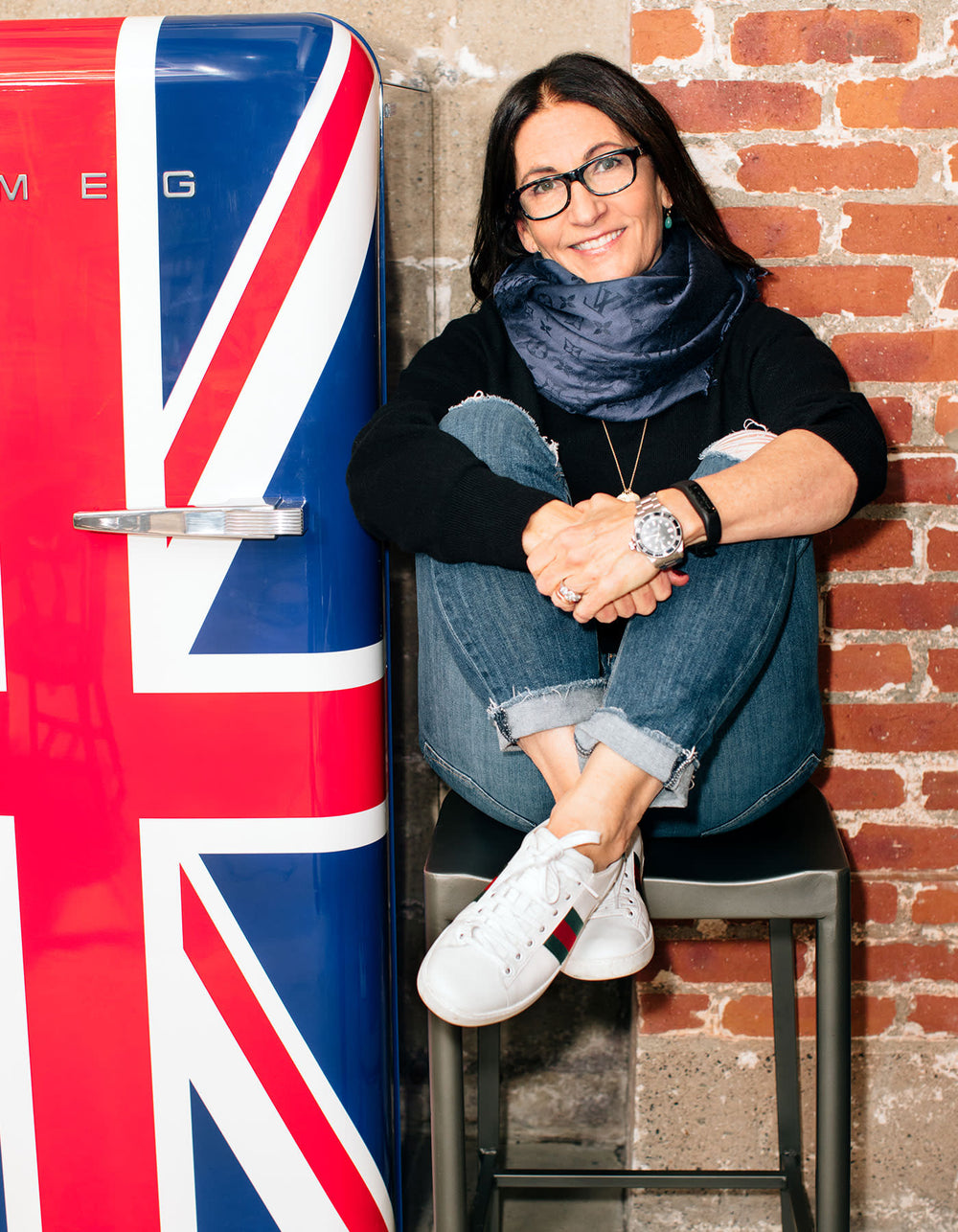Diary / Beauty / Apr 1, 2024
How To Use Color Corrector: The Ultimate Guide
Written by: Jones Road Beauty
Photography by: Ben Ritter and Jon Paterson

No one has perfect skin. From time to time, we’ve all had issues that we’d prefer to keep covered up, or at the very least, we know how distracting a breakout or bout of hyperpigmentation can be. This is where color correction comes in.
The key isn’t to totally blot out your imperfections or flatten your features, but to enhance what is already working for you by reducing what’s not working—whether that’s age spots, acne, dark under-eye circles, or general unevenness.
At Jones Road Beauty, we believe in empowering you with the know-how to turn your skin's unique qualities into a canvas of flawless artistry. Let’s look at what color correction is and how to use this strategy to put your best face forward, every time.
What Is Color Correction?
Color correction in makeup is a technique that uses the principles of color theory to balance and neutralize visible skin imperfections. This method involves applying contrasting colors to diminish the look of concerns such as redness, dark circles, and hyperpigmentation.
Demystifying Color Correctors: A Match for Every Concern
Diving deeper into the world of color correction, we discover a palette of possibilities, each designed to address specific skin concerns. This is where understanding the color wheel can guide you to the perfect match for your skin’s needs and undertones.
Let's explore how to address common skin concerns. When you succeed in understanding what you’re really trying to fix, and relying on the right colors and concealers, expect transformative results.
Our Neutralizer Pencil is perfect for dark under-eye circles, available in nine shades suitable for a range of skin tones. To find the ideal shade for you—and the right color of The Face Pencil to bring back your skin tone after you’ve made the correction—take this easy quiz here.
For other common concerns that may need more specific targeting, color-wise, here’s a quick overview:
-
-Green Neutralizes Redness: Ideal for targeting the look of acne, rosacea, and any temporary redness. The green hue counteracts the red, creating a neutral base for a flawless makeup application.
-
-Yellow Illuminates and Corrects: Perfect for evening out mild redness and brightening dull skin tones. Yellow correctors work wonders on olive to tan skin, offering a vibrant, refreshed look.
-
-Lavender Revives Dullness: Lavender correctors are the go-to for combating yellow undertones and reviving the luminosity of sallow skin. It's a quick fix to inject life into tired, dull complexions.
-
-Peach/Salmon Conceals Blue Tones: These warm hues are miraculous for light to medium skin tones, effectively camouflaging dark circles under the eyes and minimizing areas that appear bluish.
-
-Orange/Red Targets Deeper Discoloration: Darker skin tones benefit from orange to red correctors, which excellently mask dark circles and hyperpigmentation, ensuring an even, vibrant complexion.
How Do I Master Color Corrector Application?
Achieving a flawless finish with color correctors requires more than just applying large swaths of color to your desired area. When you’re frustrated with a flare-up or tenacious redness, it is very tempting to layer on a lot of product, extending beyond the area you mainly need to address—and just hope for the best. It’s not about the amount of product, and this tends to flatten your skin tone and features.
When it comes to mastering your application, color correction is about precision and patience. Let’s get into it.
Prep Your Canvas
Start with a clean, moisturized face. Clean skin is always a must, as is a moisturized complexion, and when you’re color correcting, these cannot be skipped.
Not only can this one-two step minimize signs of redness by tempering dryness or sensitive patches (so you can focus less than you may think on color correcting), but a nourished base ensures your color correctors will glide and seamlessly sit, rather than catching when you start to apply them.
Our Light Moisture Cream is a happy-medium moisturizer for those with normal skin, but if you have oily skin, our Oil-Free Moisturizer is your best bet. And for those with skin on the drier side, Miracle Cream offers a potent amount of hydration.
If under-eye circles are a concern, don’t forget Eye Cream. This delicate area can sink when you apply pressure—say, by even simply tapping on The Neutralizer Pencil—so moisturizing can help firm it up, giving your color corrector a stronger footing and making it less likely to drag, too.
Identify and Target Concerns
Use a mirror to closely examine your face in natural light. Identify the specific areas that need color correction. Are you concerned about redness around the nose? Dull circles under the eyes? Other dark spots? (All three?)
For the Eyes, Apply a Neutralizer Pencil
For dark under-eye circles, our Neutralizer Pencil is a game-changer. Available in a range of pinks and peaches, its creamy yet dense formulation allows for precise application, canceling out dark or red areas without the chalky aftermath. It’s formulated with shea butter, which is packed with antioxidants and is known to smooth fine lines.
(To find your ideal shade, our quiz can help. It’s a breeze and takes no time.)
Blend Gently
Using your fingertips or The Skin Brush, tap the color corrector into your skin with gentle dabbing motions. The goal is to diffuse the color evenly without wiping it away, ensuring it seamlessly integrates into your skin.
Layer With Care
If you're dealing with severe discoloration, it may be tempting to go heavy on the corrector. Resist this urge. Build coverage gradually, applying thin layers and allowing each to dry before adding more. This prevents caking and ensures a more natural finish.

Time for The Face Pencil
Once you’ve neutralized discoloration under the eye, follow up with The Face Pencil to bring your skin tone back to its natural complexion so the pink or peachy tones aren’t visible. This step blends the corrected areas with the rest of your skin for a cohesive look.
For redness around the nose or in other areas—fresh blemishes, recovering breakouts, or just other discolorations—use The Face Pencil, also equipped with shea butter.
We recommend keeping two or more colors on hand—a lighter option, and a darker one. The lighter will be best for your eye area, and the darker color is ideal for targeting redness around the nose or elsewhere.
Unsure about the right colors? We have a quiz for that, too.
Final Touches
There are different schools of thought on if you should apply concealer or foundation first. Usually, we are in favor of applying foundation first—this can easily help minimize the amount of concealer you need—but in instances of intense discoloration (all examples we’ve discussed here), take care of color correction first.
Once you’ve handled that, proceed with your foundation or tinted moisturizer. Formulated with sodium hyaluronate that moisturizes and restores, our What The Foundation offers a lightweight, buildable coverage that complements the color correction, enhancing your skin’s natural beauty without masking it.
Set and Refresh
Finish with a light dusting of our Tinted Face Powder to set everything in place. Throughout the day, if you need a refresh, lightly tap (don’t rub) the area with a blotting paper or a clean sponge to maintain the flawless finish.
What Are Some Advanced Color Correcting Tips?
Elevating your color-correcting game involves integrating advanced techniques and insights to achieve a truly radiant complexion. These tips are designed to refine your approach, ensuring your makeup looks impeccable and enhances your skin's natural beauty.
Strategic Highlighting
After neutralizing discolorations, dab on a highlighter like our Shimmer Face Oil for subtle dimension and glow to the skin.
Color Layering
Experiment with layering different color correctors for custom concerns. For instance, if you have an area with both redness and sallowness, you might layer green over lavender to address both issues. The key is to blend seamlessly, ensuring the colors neutralize rather than mix.
Corrector as Eyeshadow Base
Use a peach or salmon color corrector on your eyelids as a base for eyeshadow. This cancels out veiny or discolored lids and provides a vibrant canvas for your eyeshadow, making the colors pop and last longer.
Experiment with various colors of The Neutralizer Pencil and The Face Pencil to see what looks best. You don’t need much. Use your finger to tap on; this lessens the chance of build-up or cakiness underneath your eyeshadow of choice.
Mixing Mediums
Don't be afraid to mix your color correctors with a bit of moisturizer or primer if you find the formula too thick or pigmented. This can create a more sheer, blendable product that's easier to work with and looks more natural on the skin.
Color Correcting FAQs Unveiled
Still have questions? We have you covered.
Can I use color correctors daily?
Absolutely, color correctors can be a daily staple in your makeup routine, especially for persistent concerns like under-eye circles or redness. The key is to use a light hand and blend thoroughly.
Can color correctors replace my concealer?
Not exactly. Color correctors neutralize discoloration, while concealers cover. For best results, layer your concealer over the color corrector for a flawless finish. You wouldn’t want to use a green or lavender corrector on its own.
Will color correcting make my makeup look heavy?
Not if done correctly. Start with a minimal amount of product and build as needed, ensuring each layer is blended seamlessly into the skin.
Lastly
Our guide invites you to explore, experiment, and embrace the transformative power of color correction. With our carefully curated products and expert advice, we empower you to neutralize any imperfection and illuminate your natural beauty.
Remember, every stroke of the brush, every choice of color, is a step towards revealing the radiant, confident you. Welcome to the mastery of makeup with Jones Road Beauty.
 Miracle Balm
Miracle Balm
 The Face Pencil
The Face Pencil
 What The Foundation
What The Foundation










